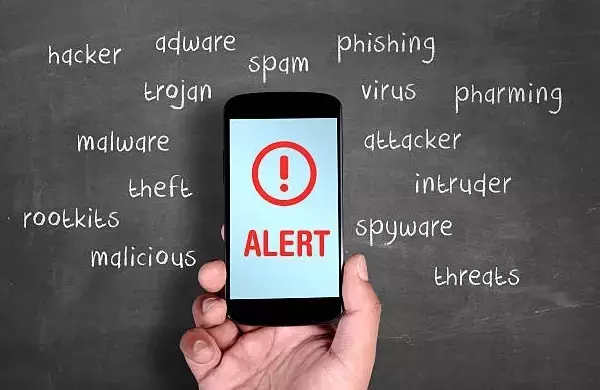Nowadays mobiles are becoming more popular because they are not only easy to carry but also have functions similar to desktops. Mobile users have increased by 10% and time spent by USA users online includes 51% on mobile devices.
Whether it is online shopping, checking and replying to emails, watching the news, or watching movies, mobiles are becoming the most used device. Businesses can use it to collect meaningful data from users like phone numbers, location, likes, and dislikes.
But if these meaningful data go into the wrong hands then it can lead to problems and can be harmful to the user.
Table of Contents
Mobile Security App
A mobile security app is used to secure information from hackers and malware or other virus. A small mistake in mobile security cannot open the door for hackers to get access to your life and disclose personal information like bank details, location, etc.

Security- Functions of Application
Authentication
Unauthorized access plays a significant role in the security risk of users. It is caused by a weak authorization mechanism. To make sure only authorized users can access your device, you must implement robust authentication measures. A strong authentication process for verification can reduce the threat posed by unauthorized users.
How can you do that?
- Implementing robust measures of security can make it challenging for hackers to access your application.
- Strong password policies and secure storage methods minimize the risk of disclosure of credentials.
- Validating user input and sanitizing is essential to prevent security vulnerabilities like SQL injection or XXS attacks.
- Implementing a comprehensive logging system will monitor failed login attempts, unauthorized access attempts, etc.
Authorization
Insufficient and improper access can be one major cause of issues related to security. This can result in gaining access to sensitive information and hence it is essential to implement an effective authorization protocol in your application.
Three authorization approaches:
- Token-based authorization- Access tokens are used to permit users. When a user successfully authenticates, the system issues an access token.
- Role-based access control – RBAC assigns a role to each user rather than assigning permission that determines what action they can perform in the application.
- Access control list – ACL is a list that tells which group of users and what task they can perform in the application.
Encryption
You should build robust data encryption in your application which ensures safe data transmission between users.
Steps to build encryption procedure:
- Use HTTPS for all communication
- Obtain and install a valid SSL/TLS certificate
- Enable HTTP Strict Transport Security
- Configure SSL/TLS settings
- Encrypt data payloads
- Implement certificate pinning
Challenges of Application Security
- If dependencies are not assessed properly or if they are not regularly updated with the latest security patches then vulnerabilities can be introduced.
- Third-party companies may contain security vulnerabilities that can be exploited by attackers.

- DevSecOps requires close collaboration between development, security, and operation teams, which can be challenging for an organization and cannot be normal to this level of collaboration and it is time-consuming and costly.
- It is difficult to find experts who can effectively address security challenges and this flaw increases vulnerabilities.
- Without a centralized management tool, it becomes difficult to identify and control vulnerable risks and ensure compliance with security policies and standards.
Best Practices- Mobile App Security
Ensure that the app is risk-free and does not disclose personal information. It’s the responsibility of the developer to ensure all security checks are done before publishing the app on the app store.
Also read: What is AI & How it works? How many types of Artificial Intelligence are there?
- Risk analysis- The most common risks that organizations face on mobile applications for conducting their business are:
Data leaks by miscreants who can obtain payment credentials, passwords, and PINs.
If the process of API integration is not monitored carefully, it may compromise with user data that lies in the device but also server-level security.
Mobile applications developed for carrying out financial transactions will be under the direction of fraudsters. There is always a risk when an application utilizes personal credential information.
The application should be framed under the framework of the General Data Protection Regulation and Revised Payment Services Directive.
- Right architecture- Applications distributed through private carriers are less likely to face threats. There are three kinds of architectural options- Native, hybrid, and pure-based. For instance, converting a web-based application to a mobile application is not tough work but encrypting the information becomes a time-consuming and costly affair.
A Few Practices Endorsed by Industrial Experts
Minimal Permission- Permission make the app vulnerable to hacker attack. No app should seek permission beyond its functional area.
Guarding Sensitive Information- Confidential data stored in the application without proper guardening mechanism is prone to attack. Cut down the volume of data stored in the app to minimize risk.
Certificate Pinning- Certificate pinning helps applications defend against man-in-the-middle attacks while connected on unsecured networks. However, it has its limitations.
Apply Multi-Factor Authentications- It adds an extra layer of security. It also covers weak passwords which can be hacked easily and promote secret code.
Penetration Testing- It aims to find potential weaknesses that a hacker can hack and misuse. It is recommended to perform this testing regularly. White box testing and black box testing is another testing measure that can be undertaken for the check.
Restrict User Privileges- If a user with high privilege gets hacked then the hacker can do damage of unimaginable level.
Ensure HTTPs Communication- HTTPs offer a safe transmission of data. The communication protocol is encrypted by Transport layer security.
Encrypt Cache- Cache saves data temporarily on the user’s device. Hackers can easily access data stored in the cache if not encrypted.
Code Obfuscation- It is a process of creating code that is difficult for hackers to understand. Obfuscation is used to automatically convert programming code into code that cannot be understood by humans.
Other practices are enhancing data security, not saving passwords, enforcing logout, consulting experts of security, preventing usage of personal devices in companies, and managing keys securely.
Frequently Asked Questions
Q1: Are mobile apps safer than websites?
Ans: Both are prone to security risks. However mobile app securityare found safer than websites to leak more types of information.
Q2: What are the security features of an app?
Ans: It includes authentication, authorization, encryption, logging, and security testing.
Q3: What are the examples of application security?
Ans: Web Application Firewall, Runtime Application Self-Protection, Dynamic Application Security Testing, Interactive Application Security Testing, and Mobile Application Security Testing.
Also read: How to Reset or Decrypt Wifi Passwords?
